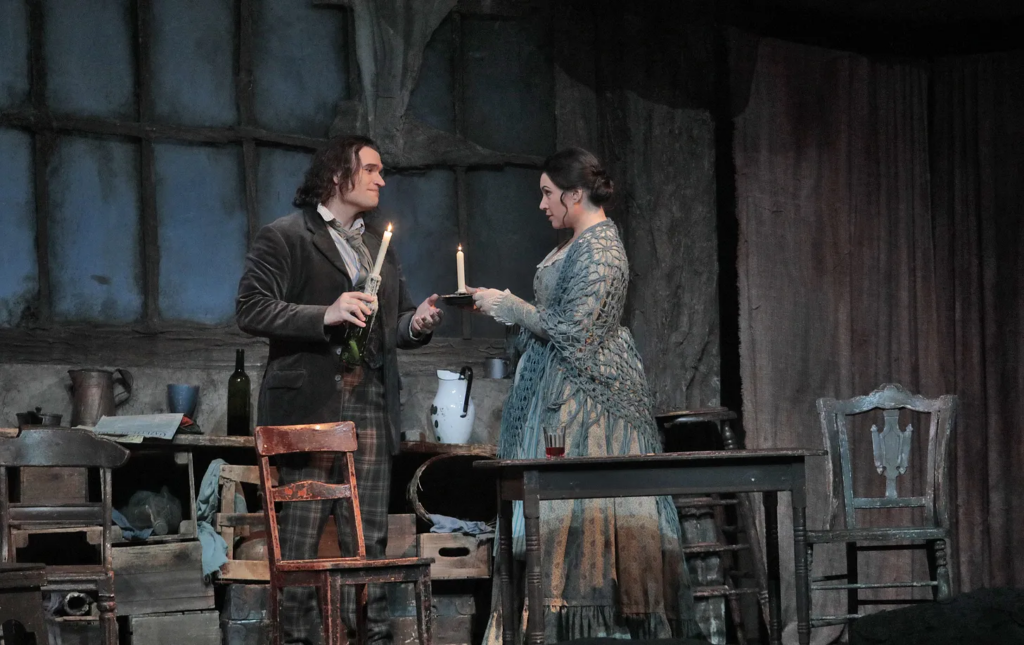
The Philadelphia Inquirer reports that Opera Philadelphia is radically cutting their prices (the article is paywalled, but you get 6 months of the Inquirer for a buck, which is not a very high wall):
In the first 48 hours after unveiling its new “pick your price” ticket program Tuesday morning, Opera Philadelphia sold 5,876 tickets — an extraordinary response that has fueled company hopes that it could sell out the season.
“Just seeing what the numbers are was very, very moving to me, because for my entire career in opera I have believed that the art form is something that is for everybody and that the structures around it are the barriers,” said Anthony Roth Costanzo, the opera’s president and general manager. “And if we sold 20 tickets on Monday and in the next two days we sold almost 6,000 tickets, that shows me that people want to come to the opera, and that in fact price was a barrier.”
The sales burst means that half of the tickets sold for the entire season were purchased in the two days after the pick-your-price program was launched.
Okay. But…
The company’s new ticket program gives patrons the choice to buy any seat for any opera at various levels from $11-$300, and in the first 48 hours, the majority of ticket buyers — 4,539 — chose to pay $11.
But 1,337 chose to pay more, and 440 patrons tacked on a voluntary donation at the time of their ticket purchase.
Nearly two-thirds of ticket buyers had never before bought a ticket to an Opera Philadelphia production. …
The new “pick your own” program has brought the average ticket price way down. Last season, patrons paid an average ticket price of $86. From Tuesday to Thursday morning, the average price for a ticket sold was $17.
So, let’s pause there. Opera is a very expensive thing to produce. To a large degree the costs are endogenous – productions are more opulent if there is a customer base willing to pay for such opulence. This is a feature of how many nonprofits work – colleges and hospitals as well (I’ll make this the subject of my next post, come to think of it). But you can’t do much on $17 per person, and so this whole strategy is pretty much based on “we will fund our productions through philanthropy”. Well, it is a strategy of sorts. But how sound is it?
But how the math nets out in the end remains to be seen. Last season’s production of Verdi’s Simon Boccanegra, for instance, had a higher average ticket price, but sold just 51% of available seats. Even if all three operas this season sell out, Costanzo expects that the lower ticket prices will mean a total ticket revenue that will be lower this season than last.
And that’s OK, he says, since ticket revenue makes up such a small percentage of the revenue pie anyway — just 13% in the 2023-24 season.
So, a cut in prices means less revenue, i.e. the percentage increase in the number of tickets sold is less than the percentage by which ticket prices have been cut, i.e. demand is inelastic, which we all (I think?) know to be generally the case in the arts. That ticket revenue is a small proportion of the total and so it doesn’t matter if it falls is an interesting perspective, but does not bode well for future finances.
“What I’m trying to reinforce for everyone right now is that the tickets are not providing a significant source of income,” Costanzo said. “And therefore, the art itself and the access to that art is what we prioritize, and the experience of being in an opera house full of diverse people in all demographics, and how that changes the feeling of the art form.”
And here I have questions. My work on pricing – see my book, but in this matter especially this essay – summarizes the body of work that has been done on pricing the high arts, and, in a nutshell, cutting prices does not lead to a change in the demographics of your audience. Opera with cheap tickets will draw the highly-formally educated and mostly better-off financially, who will say “cool: cheap tickets”. And for all of your existing customers, again almost entirely sitting on the right-hand side of the socio-economic distribution, you are saying “good news, your opera tickets just got cheaper; some donors will cover the costs.”
In the arts management world there is a lot of attention paid to “barriers” to opera attendance. But it is a mistake to think that prices are the main “barrier”; the actual primary barrier to attending opera is that most people don’t like opera. They don’t listen to recordings of it, they don’t listen to the Met broadcasts on Saturday afternoons, they don’t find works on Spotify, they just don’t like it even when it’s free. Now I don’t think that this is the biggest problem facing the arts – producing compelling work that will draw audiences who do like the art form, and encouraging education about how to better appreciate it, is more important than seeing if you can get a majority of the population to be able to sing the chorus from La Traviata by memory.
Tickets for the Flyers-Bruins game on November 2 start at $99 for the top of the nosebleed section and go higher from there. And there aren’t many tickets left. No barriers there.
And so I am really dubious about this sort of strategy – cutting your own revenue when you don’t have a lot of wiggle room on a false promise of bringing opera to “the people.” I don’t see the gain, or how it is sustainable.
Cross-posted at https://michaelrushton.substack.com/

